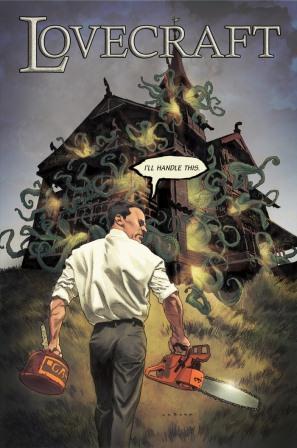(1) UNCANNY DELUGED WITH AI SUBMISSIONS. Michael Damian Thomas of Uncanny Magazine announced on October 10 that the volume of AI submissions has caused a delay in their responses to writers.

Then he later followed up with these additional thoughts:
(2) EARLY SERIALIZATIONS OF DRACULA. At Deeper Cuts in a Lovecraftian Vein, Bobbie Derie makes “A Survey of Dracula Newspaper Serials in English (1899-1928)”.
The research for Deeper Cut: Lovecraft, Miniter, Stoker: the Dracula Revision required an examination of the history of the Dracula manuscript and an evaluation of the textual variations in order to evaluate whether there was any place in the timeline for Edith Miniter, as Lovecraft alleged, and to judge Bram Stoker’s involvement with changes to the text before and after publication.
One of the most notable developments in Dracula studies in recent years has been the discovery of and translation into English of the 1899 Swedish translation Mörkrets Makter (translated into English as Powers of Darkness), which was serialized in in the newspaper Dagen, and 1901 Icelandic edition Makt Myrkanna (also translated into English as Powers of Darkness) serialized in the newspaper Fjallkonan. What has become apparent, however, is that there were also numerous Dracula serializations in English-language newspapers in the period 1899-1928. Thanks to the digitization of old newspaper archives and online subscription services, these newspaper serials, which have received rather scanty attention, are more accessible today than they were previously. Enough that a survey of the extant texts is warranted….
… There may well be additional newspaper serializations of Dracula besides these; these are just the serials available via newspapers.com as of the time of this writing. Links will be to the full pages, as clips tend to come out illegible….
(3) JOY DAVIDMAN AT THE LONDON CIRCLE. Rob Hansen has assembled excerpts of fannish memoirs about “C.S. Lewis & The London Circle” at Fiawol.org. A great deal of it is about Joy Davidman’s attendance at pub meetings of the London fan group.
[SAM YOUD, who wrote as “John Christopher”] …Joy herself I got to know quite well. We drank bitter together and argued endlessly through those Thursday evenings. Joy never stopped arguing, and we derived much mutual pleasure from the exercise.
She had endured a cruelly-hard childhood, involving a range of diseases that included curvature of the spine, exaggerated insulin secretion resulting in excessive appetite and a weight problem, and Grave’s disease – hyperthyroidism. For the last she was treated by a doctor who required her to wear a radium collar around her neck, weekly for a year. It appeared to cure the condition, but one can speculate on the cost in later life. I did not know any of this before reading AND GOD CAME IN, her biography by Lyle Dorsett, published in 1983. Nor did she talk about her achievements as an award-winning poet, her authorship of two well-regarded novels, or her stint in Hollywood as a screenwriter. Perhaps she did not want to belittle our petty triumphs in sales to Astounding Stories or Galaxy or New Worlds….
(4) NOBEL PEACE PRIZE. “2024 Nobel Peace Prize goes to Japanese atomic bomb survivors’ group” – NPR has details.
A Japanese anti-nuclear weapons group made up of survivors of the atomic bombings in Japan during World War II has won the 2024 Nobel Peace Prize.
The Norwegian Nobel Committee said it has awarded the Japanese organization Nihon Hidankyo “for its efforts to achieve a world free of nuclear weapons and for demonstrating through witness testimony that nuclear weapons must never be used again,” sending a message to countries that are considering acquiring or threatening to use them.
Committee Chair Jørgen Watne Frydnes said Nihon Hidankyo, made up of survivors of the August 1945 nuclear bombings of Hiroshima and Nakasaki by the United States, has been instrumental in the global movement that has kept nuclear weapons from being used in conflict for 80 years….
… At a press conference in Hiroshima, Nihon Hidankyo’s co-chair, Toshiyuki Mimaki, 81, held back tears and pinched his cheeks when the award was announced. “I can’t believe it’s real” he told reporters.
Mimaki is a Hiroshima survivor and said the award helped recognize the group’s work. “It would be a great force to appeal to the world that the abolition of nuclear weapons can be achieved,” he said.
He said the idea that nuclear weapons bring peace to the world is wrong.
“It has been said that because of nuclear weapons, the world maintains peace. But nuclear weapons can be used by terrorists,” he said. “For example, if Russia uses them against Ukraine, Israel against Gaza, it won’t end there. Politicians should know these things.”…
(5) SOME OF THE ORIGINAL MONSTERS. Atlas Obscura introduces us to “The Wendigo and 6 Other Ancient Monsters From Indigenous Folklore”.
…Around the world, Indigenous communities have passed rich storytelling traditions from one generation to the next from time immemorial. Many of the stories have been lost in the upheaval and destruction of the colonial era. Selfless heroes and bold tricksters alike have been forgotten, or faded to a mere wisp of collective memory. But the monsters, ah, the monsters. Ferocious, fanged, skulking, slithering, they seem to have endured better than most. These beings still haunt—and hunt—from Australia to Brazil, Lake Victoria to Lake Winnebago. Here are some of the most memorable ancient terrors from Indigenous lore that still send chills down our spines.
First on the list:
Beware the Wendigo, the Frostbitten Flesheater of North America’s Chilly Heartland by J.W. Ocker
Few monsters from Indigenous folklore can boast of making it in Hollywood. There’s Krampus, a modern amalgamation of deeply ancient Central European traditions, and the wendigo, which first terrorized the Algonquin, Ojibwe, and other Anishinaabe peoples around the North American Great Lakes. We’ll leave it to you to decide whether the 2021 movie Antlers does justice to the wendigo’s ferocity, but we’re betting the wendigo doesn’t care. It’s too busy looking for its next victim. A potent symbol of human greed, the emaciated creature is insatiably hungry and appears in the lean and desperate season of winter. In the 19th century, some documented regional cases of cannibalism and other unspeakable acts were chalked up to individuals “going wendigo.”
(6) FANTASY STUDY. Adam Roberts, winner of the John W. Campbell Memorial Award for Jack Glass, a three-time BSFA Award winner, and Professor in Nineteenth Century Literature and Culture at Royal Holloway, University of London, UK, will have a nonfiction book Fantasy: A Short History out in April 2025 from Skylight Books.
One of the most popular genres of modern times, fantasy literature has as rich a cultural and literary heritage as the magical worlds that so enrapture its readers. In this book, a concise history of the genre, Adam Roberts traces the central forms and influences on fantasy through the centuries to arrive at our understanding of the fantastic today.
Pinning the evolution of fantasy on three key moments – the 19th-century resurgence of interest in Arthurian legend, the rise of Christian allegory, and a post-Ossian, post-Grimm emergence of a Norse, Germanic and Old English mythic identity – Roberts explores how the logic of ‘the fantastical’ feeds through into the sets and trappings of modern fantasy. Tracking the creation of heroic and high fantasy subgenres through antiquarian tradition, through C. S. Lewis and J. R. R. Tolkien and into the post-Tolkien boom in genre fantasy writing, the book brings the manifestation of the fantastic beyond literature into art, music, film and TV, video games and other cultural productions such as fandoms. From Tennyson and Wagner, through Robert Graves, David Jones, Samuel Delany, Dungeons and Dragons, Terry Pratchett and Robin Hobb, to the Game of Thrones, Skyrim, The Witcher and The Lord of the Rings media franchises, the book digs into the global dissemination and diversity of 21st-century fantasy. Accessible and dynamic, wide-ranging but comprehensive, this is a crash-course in context for the most imaginative form of storytelling….
(7) TEDDY HARVIA CARTOON.

(8) MEMORY LANE.
[Written by Paul Weimer.]
Anniversary: Star Trek’s “Mudd’s Women” (1966 on this date)
By Paul Weimer: Harry Mudd is, for all being a reprobate, cheat, con man, and sneak, is one of the iconic characters of all of Star Trek. In a supposedly glorious Federation, it is heartwarming in a way to see a character as mercilessly mercenary as Harry Mudd come on screen.
“Mudd’s Women” is his first appearance. (he would be in one more TOS episode, an animated episode and surprisingly, also on Discovery (before they go to the future).
“Mudd’s Women” itself is a con man scheme involving a drug to make women appear more beautiful, and Mudd trying to marry them off to settlers while on the drug, and reap the profits. It shows the early “Wagon Train in Space” roots of Star Trek to the fullest, because with just some changes, this could easily be an episode of Bonanza or another Western. And if you look at Mudd’s getup (and that hat), you can totally see it. And Kirk’s clever use of a placebo in the denouement is a positive message that beauty drugs, in the end, pale to self-confidence and real inner beauty.

(9) COMICS SECTION.
- Breaking Cat News tunes in a UFO.
- Close to Home has a breaking report.
- Crankshaft adds an important quote to its series on book banning.
- Martin Rundkvist brings us “Lovecraft and cats”.
(10) LEFT-HANDED COMPLIMENT. From 2018: David Williams tells us about the time: “They Tried to Ban Fahrenheit 451 and Replace It With. . . My Book” at Literary Hub.
So it was no surprise when from Santa Rosa County in the panhandle of Florida this past month there came familiar news. A parent, discovering their child was reading something they found problematic, approached a school board and asked that Fahrenheit 451 be removed from the curriculum.
“Filth,” that parent called Bradbury’s work, as she pressed for it to be removed from an eighth grade reading list. The concerned mom leading the banning effort didn’t see its prophetic relevance. All she saw was a vulgarity, the word “bastard,” which she felt was inappropriate for her 13-year-old daughter. “I’m just trying to keep my little girl a little girl,” she said.
This kind of book-banning effort isn’t unusual, but this one was a gut punch. Why? Because the parent organizing the banning effort suggested that Bradbury’s work should be replaced with something more acceptable to her.
Among her suggestions for more “suitable” material: my own dystopian novel, When the English Fall.
I cannot imagine receiving a more troubling and heartbreaking endorsement.
Sure, my Amish protagonist and narrator doesn’t use vulgarity in the face of the world’s collapse. Because he’s Amish. Old Order Mennonites don’t tend to swear like sailors. But my story contains its fair share of death and murder and human horror, at least as graphic as anything you’ll find in Bradbury.
The mother bringing the complaint was concerned at the violence in the book, and worried that the book wasn’t “safe,” and suggested that kids might read about murder and violence and become murderous and violent themselves. As a pastor, I preach the Bible every Sunday, and teach it in classes. My gracious, I can’t imagine a less “safe” book than the Bible. Try reading Genesis sometime. That’s a rough, rough book. My Adult Ed class has been discovering this last month as we’ve been reading it together. Murder? Rape? Betrayal? Incest? Ray Bradbury’s got nothing on the Word of God….
(11) THEY MAKE A DESOLATION. “SpaceX wants to go to Mars. To get there, environmentalists say it’s trashing Texas” reports NPR.
…Musk might see Starship as an ark for all God’s creatures, but environmentalists tell a different story. As Starship prototypes have begun flying from SpaceX’s launch pad in Boca Chica, Texas, they say the company has shown little regard for the wildlife Musk has said he wants to protect.
Now, a review of state and federal records by NPR, including some obtained through a freedom of information request, shows how SpaceX has sometimes ignored environmental regulations as it rushed to fulfill its founder’s vision. With each of its launches, records show, the company discharged tens of thousands of gallons of what regulators classify as industrial wastewater into the surrounding environment.
In response to the discharges of water from the pad, both the Environmental Protection Agency and the Texas Commission on Environmental Quality (TCEQ) have determined that SpaceX has violated the Clean Water Act. Both agencies levied fines totaling more than $150,000 against the company in September….
(12) EMBRACEABLE YOU. Meanwhile, “SpaceX pulls off unprecedented feat, grabs descending rocket with mechanical arms” – CBS News has the story.
In one of the most dramatic, high-risk space flights to date, SpaceX launched a gargantuan Super Heavy-Starship rocket on an unpiloted test flight Sunday and then used giant “mechazilla” mechanical arms on the pad gantry to pluck the descending first stage out of the sky in an unprecedented feat of engineering.
The Starship upper stage, meanwhile, looped around the planet and re-entered the atmosphere over the Indian Ocean as planned, enduring temperatures nearing 3,000 degrees as it descended to a controlled, on-target splashdown.
The spacecraft came through the hellish heat of re-entry in relatively good condition, protected by improved heat-shield tiles and beefed-up steering fins that worked as needed while engulfed in a fireball of atmospheric friction.
But the jaw-dropping first stage capture back at the launch pad, using pincer-like arms more familiarly known as chopsticks, was the clear highlight of the giant rocket’s fifth test flight.
Snagging the descending 23-story-tall Super Heavy booster with the mechazilla arms represented an unprecedented milestone in SpaceX’s drive to develop fully reusable, quickly re-launchable rockets, a technological tour de force unmatched in the history of earlier space programs relying on expendable, throw-away rockets….
(13) PIRATE SITE CHANGES NAME. “Aniwatch, World’s Biggest Anime Piracy Site, Rebranded to HiAnime” reports CBR.com.
The world’s biggest anime piracy site, Aniwatch, has recently rebranded itself following a huge rise in infamy.
The popular site “Aniwatch” has changed its domain name to “HiAnime” this week. Users attempting to access Aniwatch received the message: “Aniwatch is being rebranded to HiAnime. You will be redirected to the new HiAnime website in 10 seconds. Or you can also click here to go to HiAnime now.” According to Similarweb, “Aniwatch” is the #1 most accessed anime piracy site worldwide with 136.2 million visitors in January 2024. It’s also 16th overall in the “Streaming and Online TV” category. Aniwatch does not provide an official explanation for the rebranding.
A new report by Torrent Freak adds that a recent ‘dynamic+’ site blocking order in India may have motivated this. This refers to a court-ordered instruction to Internet Service Providers (ISPs) to block access to a website, with the theory proving especially likely given that India is Aniwatch’s biggest user base…
(14) VIDEOS OF YESTERDAY. [Item by Mike Kennedy.] Last night’s Saturday Night Live had several items that could be considered anything from genre adjacent to vaguely kind of sort of adjacent to genre adjacent. It depends on how you look at it. And how hard you squint.
This one is definitely horror. But not supernatural horror or anything else that’s really SF-adjacent. More like serial murderer horror. Although, the fantasy talking furniture, bookcases, etc. DO lend more credibility as genre related. I think it’s extremely well-made, considering they (presumably) had less than a week to put it together. “My Best Friend’s House”.
Oh, this one is absolutely solidly genre IMO. You just have to watch it all the way to the end to see why. “The Hotel Detective”.
[Thanks to Steven French, Kathy Sullivan, Teddy Harvia, Paul Weimer, Lise Andreasen, Mike Kennedy, Andrew Porter, John King Tarpinian, Chris Barkley, Cat Eldridge, and SF Concatenation’s Jonathan Cowie for some of these stories. Title credit belongs to File 770 contributing editor of the day Lis Carey.]



